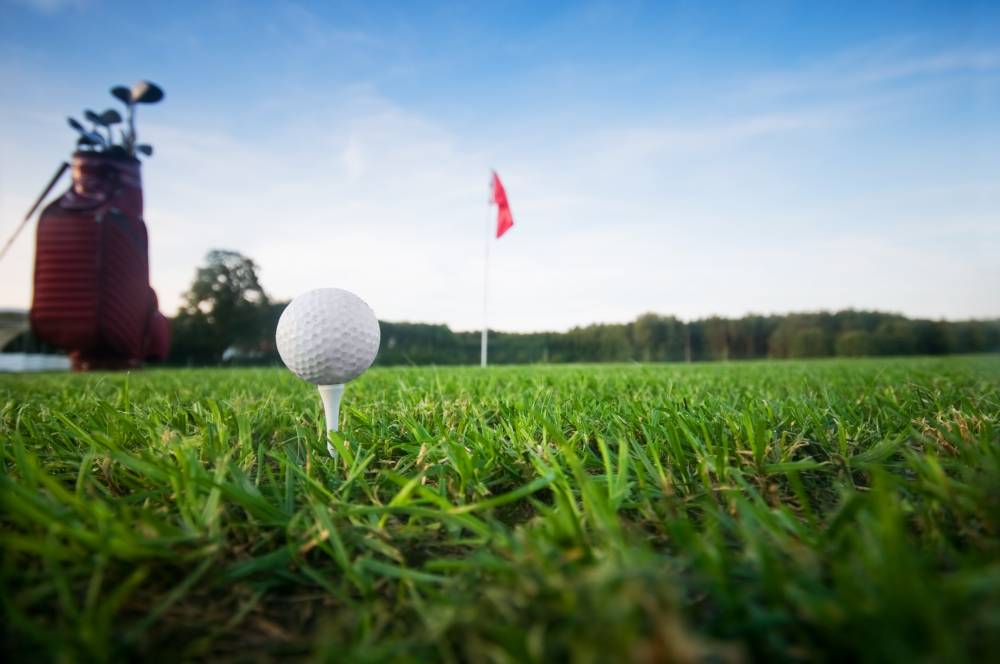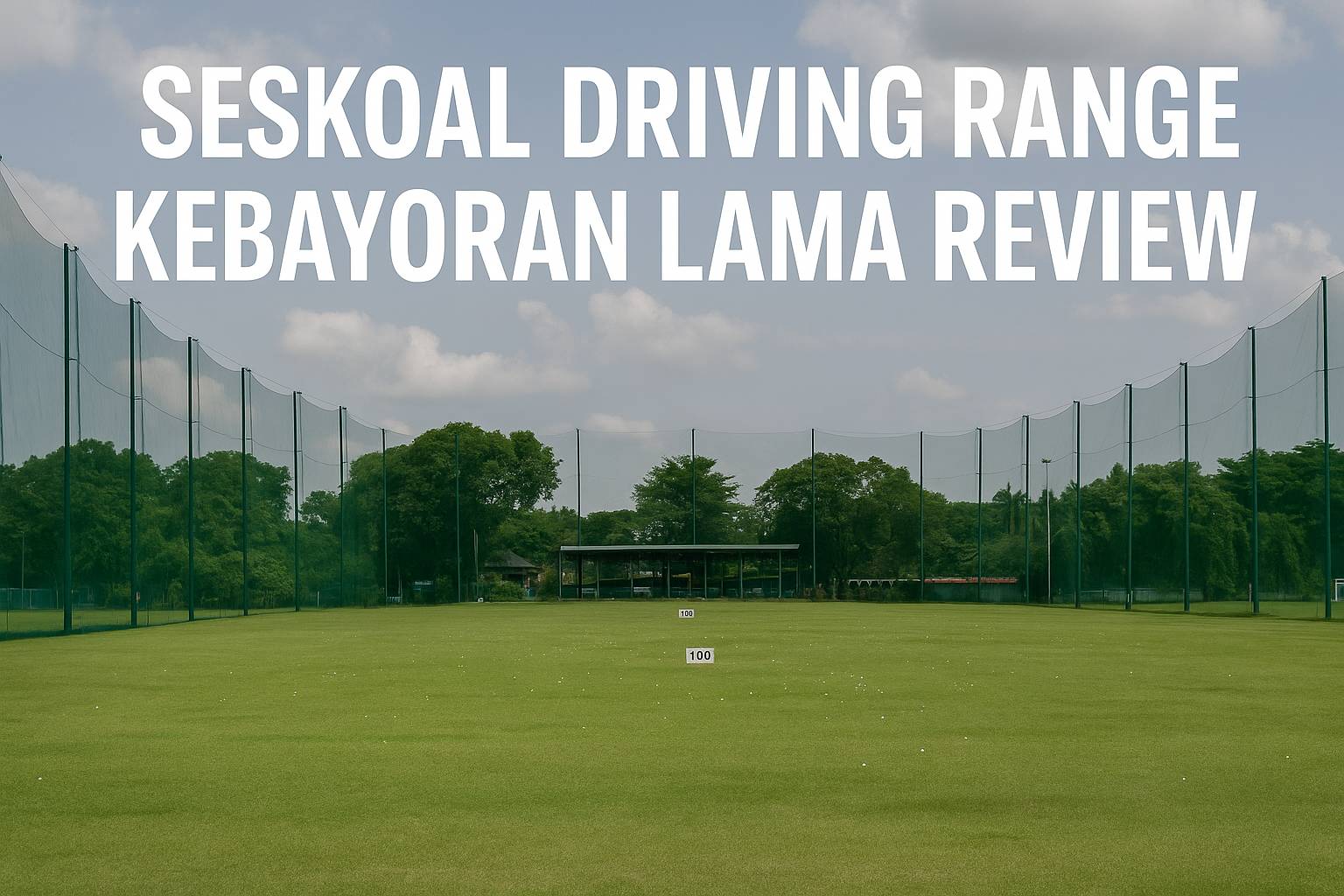In the game of golf, every section of the course plays a strategic role, but the green—or putting green—is the most crucial area that ultimately decides the outcome of each hole. The green is the final area of every hole, where players must sink the ball into the hole using a putting stroke. In golf, the green is the main stage where a player’s skill, strategy, and composure are truly tested. Here’s the full explanation from GoGolf.
Compared to other parts of the course like the tee box, fairway, or rough, the green features the shortest, smoothest, and most intensively maintained grass surface. This is so the ball can roll precisely and predictably when struck with a putter. The quality of the green is often the primary indicator of a golf course’s overall quality. A carefully designed and well-maintained green provides an optimal and fair playing experience for all golfers.
Technically, every green has a hole with a standard diameter of 4.25 inches (approximately 10.8 cm), usually marked with a flagstick. It’s positioned at the end of the playing route, after the fairway and the fringe (the transitional area between the fairway and green). Often, greens are also surrounded by additional challenges like sand bunkers or complex contours to increase playing difficulty.
For golfers, understanding the green’s characteristics is critical because strong putting can mean the difference between a par, birdie, or even a bogey. A player might reach the green in two shots on a par-4, but without reliable putting skills, that effort can still end in unwanted extra strokes.
Main Characteristics of the Green: Location, Function, and Grass Surface

The green isn’t just the last area of a hole—it’s the most technical and sensitive part of the game. Understanding its features and components is vital for anyone looking to elevate their performance.
The Green’s Strategic Location
The green is positioned at the end of every hole, serving as the final target after all preceding shots from the tee box. Once a player has maneuvered the ball through tee shots, fairway play, and perhaps some hazards like bunkers or rough, the green becomes the primary goal to finish the hole. Because of this vital role, greens are always constructed with great attention to strategic design, slopes, and hole locations.
Main Function: The Putting Area
The green’s primary purpose is for putting—a controlled, gentle stroke aimed at rolling the ball into the hole. Therefore, the green surface must be flexible, smooth, yet subtly contoured to provide a challenge. The putter—a club designed specifically for putting—doesn’t lift the ball off the ground, but instead pushes it smoothly along the grass.
Specialized Grass Surface
The green uses special types of grass that are short, fine, and highly responsive, such as bentgrass, bermudagrass, or zoysia. The grass height is typically just 2–4 mm, trimmed daily with specialized machines to maintain consistent surfaces that won’t disrupt ball roll. A high-quality green preserves speed and stability during putting.
Maintaining the green is a highly technical, complex job. Golf groundskeepers and agronomists must closely monitor moisture levels, aeration, soil pH, and regular fertilization to keep the green ideal. Even weather changes like rain or strong wind can significantly affect green speed.
The Hole and Flagstick
Every green has a standard hole 4.25 inches wide. It’s marked with a flagstick so players can spot their target from a distance. The hole’s position is often changed by course staff to prevent turf damage from foot traffic and to add variety and challenge to the game.
With these characteristics, the green isn’t just the final place to play in a hole—it’s the focal point that determines a golfer’s final score.
Reserve top golf courses instantly on GoGolf. Get the app today!
Key Activities and Skills on the Green

The green isn’t merely the last stop before completing a hole. In fact, it’s where a range of delicate skills are tested, from reading contours to controlling distance. A golfer who masters green play gains a competitive edge because good putting can save a game even if earlier shots were less than perfect.
Putting: The Score-Defining Stroke
The main activity on the green is putting, a technique using the putter to gently roll the ball with the goal of getting it into the hole. While it sounds simple, putting is one of the toughest aspects of golf. Many players lose birdie or par opportunities by failing to sink a putt within one or two strokes.
Good putting requires:
- Stable body and head balance
- Controlled hand strength
- Consistent swing timing
- Careful reading of the green’s contours
Professional golfers even study green speed—the pace at which a ball rolls over the green surface—using a device called a stimpmeter to adjust stroke power accordingly.
Reading Contours and Slopes
Green surfaces are never perfectly flat. There are gentle slopes, minor waves, or undulations that greatly impact the ball’s roll direction and speed. That’s why players must always “read the green” before putting.
Techniques for reading the green include:
- Observing from multiple angles (front, back, and sides of the hole)
- Predicting how the ball will follow gravitational breaks
- Analyzing moisture or grass speed
A blend of intuition and experience is key to reading greens accurately.
Managing Distance and Speed
Controlling putt speed is critical. A putt that’s too strong will overshoot the hole, while one too soft will stop short. Many golfers practice with pendulum swings to train consistent swing motion and pace.
Some also use a strategy called “lag putting,” where the first putt aims to get close enough for an easy follow-up, reducing the risk of a three-putt—taking three strokes on the green—which leads to bogeys or worse.
So, the green isn’t just where a game ends, but a strategic zone where precise technique, calm mental focus, and playing experience merge to determine the final golf outcome.
Green Size and Shape: Design Variations that Influence Strategy

The size and shape of greens aren’t standardized. Instead, variation is what gives each hole its unique character and strategic demands. Golf course architects typically tailor green dimensions and shapes based on the hole’s challenges, nearby hazards, and overall course aesthetics.
Green Size
Generally, greens can range from 200 to over 1,000 square meters. Smaller greens demand higher approach shot accuracy, while larger greens offer more landing room but introduce trickier long putts across contours.
Example strategic approaches based on size:
- Small greens: Require highly accurate approaches, or the ball risks rolling to the fringe and leaving a long putt.
- Large greens: Provide more landing room but may present long, undulating putts.
Green sizes also often align with hole types:
- Par-3 holes typically have smaller greens
- Par-5 holes usually feature larger greens to accommodate varied approach scenarios
Green Shape
Green shapes vary widely: round, oval, kidney-shaped, L-shaped, or irregular designs that follow natural land contours. This isn’t just for aesthetics—it significantly impacts play strategy.
For example:
- Long back-to-front greens: Players must adjust carry distance based on pin placement.
- Wide but shallow greens: Demand better directional control than distance control.
- Tiered greens: With multiple elevation levels, they require precise landing to end up on the right tier for easier putting.
Many greens also have “false fronts,” or slopes at the front that will roll the ball back to the fairway if the shot isn’t strong enough. This adds complexity to approach strategies.
Changing Hole Locations (Pin Positions)
In practice, the hole position on greens is rotated daily by course staff. This helps maintain grass quality and provides fresh playing challenges. Thus, a green’s shape and size are vital for offering flexibility in daily pin placements.
Smart players take note of pin positions and adjust their approach shots to safer green sections that still leave good putting opportunities.
Strategy for Approaching the Green: Shot Efficiency and Game Management
In golf, the strategy for reaching the green—known as the approach to the green—marks the transition from long game to short game. A golfer’s main goal on any hole is to get the ball onto the green as quickly and efficiently as possible, because only then do clear chances open up to finish the hole with a minimal score.
Strategy by Hole Type
Approach strategies vary by hole type:
- Par-3: Ideally, the ball should reach the green in one shot from the tee, demanding high accuracy. Many par-3s feature bunkers or water guarding the front, requiring controlled clubs like 7–9 irons or short hybrids.
- Par-4: Typically, the first (drive) aims as far as possible down the fairway, with the second shot as the approach. Pros look to place the ball in optimal fairway spots for better green angles.
- Par-5: Golfers usually have three shots to reach the green. Long hitters may attempt a two-on (reaching in two shots), but the common strategy is a lay-up for a comfortable third approach aimed at the flag.
Factors that Influence Approach Effectiveness
Club Selection:
Choosing the right club is crucial. Players weigh remaining distance, wind, pin location, and green contour. If the pin is tough (like at the back on a slope), players might target safer spots and take two putts.
Visualization and Targeting:
Before approaching the green, smart players visualize ball flight paths—whether aiming left, right, short, or long. The ideal target isn’t always the hole but an area allowing margin for error.
Risk Management:
A key golf principle is “play low risk, maximize outcomes.” If a green is guarded by bunkers or water on the right and the pin is close to that side, it’s wiser to aim for the safer left side and attempt a longer putt.
Reading the Green from Afar:
Experienced golfers even begin reading greens from the fairway. By noting slope directions or flagstick placement, they can plan landings that set up easier putts.
The Role of Data and Stats in Green Strategy
In today’s golf, professionals track stats like GIR (Greens in Regulation) to measure approach success—how often they reach the green in regulation strokes (par minus two). A higher GIR boosts birdie or par chances.
Another key stat is proximity to the hole, or average distance to the hole after approach shots. The closer, the easier the putt, increasing low-score chances.
Practical Tips for Beginners
- Always identify pin positions—front, middle, or back—to guide club choice and shot power.
- Avoid unnecessary aggression if unsure—it’s better to be safely on the green than to overhit into bunkers or rough behind.
- Practice distance control—many beginners “over-club” (choose too long a club). Focus on consistent approach distances.
Conclusion: The Green as the Heart of Golf
The green isn’t just where a hole ends—it’s the center of tactics, skill, and emotional control in golf. This is where scores are truly decided, and golfers are tested for precision, patience, and sharp judgment.
By understanding green characteristics, putting skills, design variations, and efficient approach strategies, players can gain far better control over their scores. The green is the critical arena where one stroke can be the difference between a birdie, par, or bogey.
For anyone looking to improve their golf, studying the green is a must, not an option. Watch its details, read its contours, hone your strokes—and savor every challenge this verdant stage presents.
[ Follow our social media Account: GoGolf Instagram | GoGolf Facebook | GoGolf X ]











